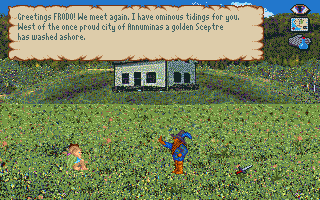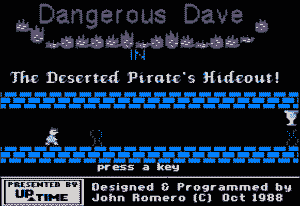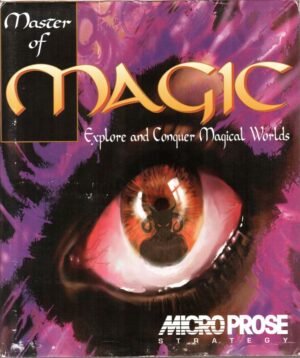Retro Replay Review
Gameplay
J.R.R. Tolkien’s War in Middle Earth delivers a strategic tabletop feel on a 16-bit cartridge, challenging players to guide Frodo and the Fellowship from the Shire to Mount Doom. At its core, the game revolves around a dynamic campaign map where heroes and armies are represented by colored dots, encouraging you to plan supply lines, negotiate neutral powers, and fend off Sauron’s forces. The absence of a fog of war means every unit—ally, neutral, or enemy—is visible at all times, but movement is carefully managed by flashing icons that indicate which forces can receive orders on a given turn.
(HEY YOU!! We hope you enjoy! We try not to run ads. So basically, this is a very expensive hobby running this site. Please consider joining us for updates, forums, and more. Network w/ us to make some cash or friends while retro gaming, and you can win some free retro games for posting. Okay, carry on 👍)
The three-tiered map system—Full Map, Campaign, and Animation Levels—creates varied layers of interaction. The Full Map Level provides a broad strategic overview, while the Campaign Level invites closer inspection of towns, citadels, and roaming armies. Decisions made here determine which battles you fight or avoid. For instance, you may choose to ignore a minor skirmish with Orc marauders to rush your ring bearer towards Rivendell, gambling on Pippin and Sam to hold the line.
Once combat is initiated, the game switches seamlessly into ordered encounters with four basic commands: Charge, Engage, Withdraw, and Retreat. Each choice carries risks, from potential hero casualties to losing precious time as Nazgûl draw nearer. If your Ring-Bearer falls, a survivor must assume the burden, and if the One Ring ever lands in enemy hands, Sauron will seek to return it to Barad-Dûr, ending your campaign in defeat. Such emergent outcomes lend real weight to every movement.
Alongside grand strategy, the Animation Level handles character duels, item management, and story events. Discovering elven armor or ancient weapons can tip the scale in a critical clash, but only if you choose to engage those random encounters. The flexibility to bypass certain skirmishes or explore hidden ruins invites multiple playstyles, from cautious preservation of your heroes to aggressive dominance of the map. Overall, the gameplay loop balances freeform movement with narrative set-pieces, making each playthrough a unique struggle against the creeping darkness of Mordor.
Graphics
For a mid-’90s 16-bit title, War in Middle Earth boasts surprisingly detailed visuals. The Full Map screen uses a clear color-coded system—blue for allies, red for enemies, green for neutrals—and delineates terrain types with simple but effective sprites. Though the scale reduces towns and armies to mere dots, the iconography remains instantly recognizable, helping you track threats across sprawling plains, dense forests, and mountainous passes.
On the Campaign Level, the graphic fidelity steps up: towns appear with tiny castle silhouettes, and armies adopt heraldic shields that indicate both their strength and national origin. Character figures are rendered in charming, pixel-art detail, allowing you to spot Aragorn’s cloak or Gandalf’s staff at a glance. While the palette is limited compared to modern titles, the vibrant colors and well-defined icons make it easy to distinguish friend from foe even during large-scale engagements.
The Animation Level introduces more expressive sprites and simple cut-scenes for story moments—Frodo clutching the Ring, Nazgûl riding in on black steeds, and Gandalf delivering urgent dispatches. Though true animation is sparse, these cinematic touches heighten the drama of each encounter. Combat sequences use side-view perspectives with basic, frame-by-frame attacks, giving a sense of weight to each sword slash or shield bash.
Despite its age, the visual presentation remains coherent and inviting. Menus and interface elements are laid out clearly, with item icons and statistics easily readable. For retro enthusiasts, War in Middle Earth preserves the charm of 16-bit strategy games while offering a faithful depiction of Middle-Earth’s geography and inhabitants, from the rolling hills of the Shire to the jagged towers of Mordor.
Story
War in Middle Earth loosely follows the journey of the One Ring from the Shire to Mount Doom, but it never feels strictly bound by the novels. The narrative is framed by epistolary snippets—like Gandalf’s urgent letter to Frodo—and evocative poetry that recalls the famous Ring verse. These snippets set the stage for your campaign, emphasizing the growing threat of Sauron’s servants and the weight of your quest even before the first move.
While the main campaign tasks you with escorting a ring-bearer to Mount Doom, the orders of play allow heroes to fall in combat or split from the Fellowship, creating branching storylines that feel personalized. You might see Aragorn leading Gondorian reinforcements to relieve a besieged citadel, or Legolas and Gimli hunting roaming Orc bands. Each random encounter—whether retrieving cloaks in Lothlórien or negotiating with neutral Elves—adds a layer of narrative depth to your strategic decisions.
Key story beats are delivered through short animations and text prompts, which, although simple, capture the spirit of Tolkien’s world. You’ll experience the dread of the Nazgûl hunting Frodo on Weathertop and the urgency of the Council of Elrond when planning your next move. The flexibility of the campaign occasionally leads to “alternate history” outcomes—such as the Ring falling into Orcish hands or Gondor’s citadels being overrun—offering a darker spin on the familiar tale.
Ultimately, the story functions as both backdrop and catalyst for your strategic choices. You’re never merely moving pawns on a map; you’re shepherding the fate of Middle-Earth’s peoples. This synergy of gameplay and narrative ensures that every victory feels hard-earned and every setback underscores the relentless encroachment of Mordor’s shadows.
Overall Experience
J.R.R. Tolkien’s War in Middle Earth is a captivating blend of grand strategy and adventure elements that still stands out among 16-bit era titles. Its emphasis on player agency—choosing whether to engage in battles, exploring neutral territories, or protecting the Ring-Bearer—creates a sandbox experience that rewards both tactical foresight and bold gambits. The layered map system and clear, color-coded presentation make it approachable for newcomers, while the emergent narratives and risk-reward mechanics keep seasoned strategists coming back.
Despite some dated interface quirks, such as menu navigation that can feel slow and occasional rigidity in combat orders, the game’s depth more than compensates. Veterans of modern strategy titles may find the pace deliberate, but this encourages careful planning and thoughtful exploration. The dynamic possibility of multiple ring-bearers and the looming threat of Sauron’s triumph inject genuine tension into each turn.
Replay value is high, thanks to variable starting positions for heroes and armies, random encounters that can dramatically alter your path, and the open-world nature of Middle-Earth itself. Whether you’re a die-hard Tolkien fan eager to relive (and rewrite) the Fellowship’s quest or a strategy enthusiast looking for a retro challenge, this game delivers a rich, challenging experience.
In an era before real-time strategy dominated the scene, War in Middle Earth carved out its niche by emphasizing deliberate decision-making and narrative depth. Its combination of strategy, adventuring, and emergent storytelling ensures that each campaign feels like a fresh odyssey through Tolkien’s timeless landscape. For anyone intrigued by the lore or seeking a rewarding strategic epic on classic hardware, this title remains a hidden gem worth uncovering.
 Retro Replay Retro Replay gaming reviews, news, emulation, geek stuff and more!
Retro Replay Retro Replay gaming reviews, news, emulation, geek stuff and more!









Reviews
There are no reviews yet.